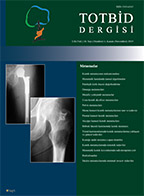
Regarding the frequencies of metastases in cancer; metastases of the bone are in the third place following lung and liver metastases. Bone metastases can be solitary or in more than one bone at the same time, making significant changes in the patients` mean survival and treatment approaches. Pathologic fracture rates are not infrequent in bone metastases. Detection and treatment of the fracture is easier before it occurs, associated with lower morbidity, making the patient gain his functions earlier. Several criteria are used for the fracture risk of the lesions. In the evaluation of the long bone metastases; circumferential cortical involvement more than 50% and axial cortical involvement longer than 30 mm are the strongest clues for the development of fracture. Since periacetabular region involvements are associated with high morbidity, they are more important and should be evaluated thoroughly in pelvic metastases. For this goal, Harrington classification is quite useful, and guides the treatment approaches.